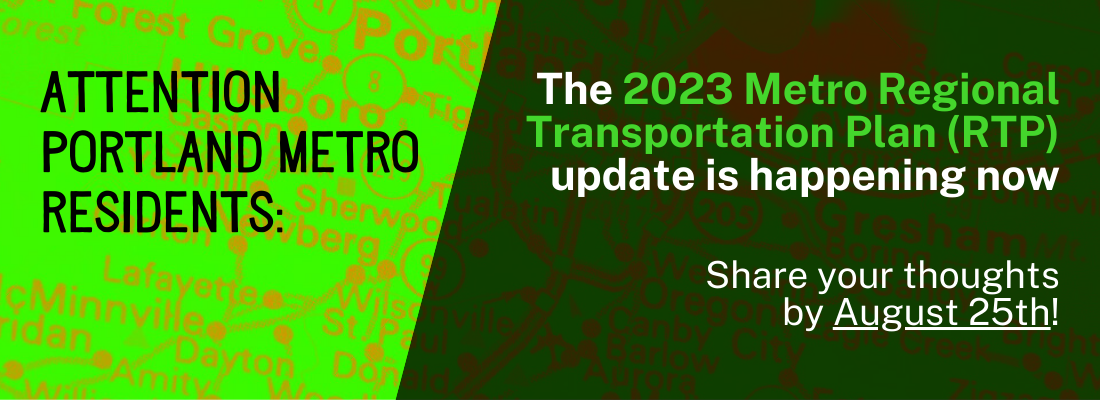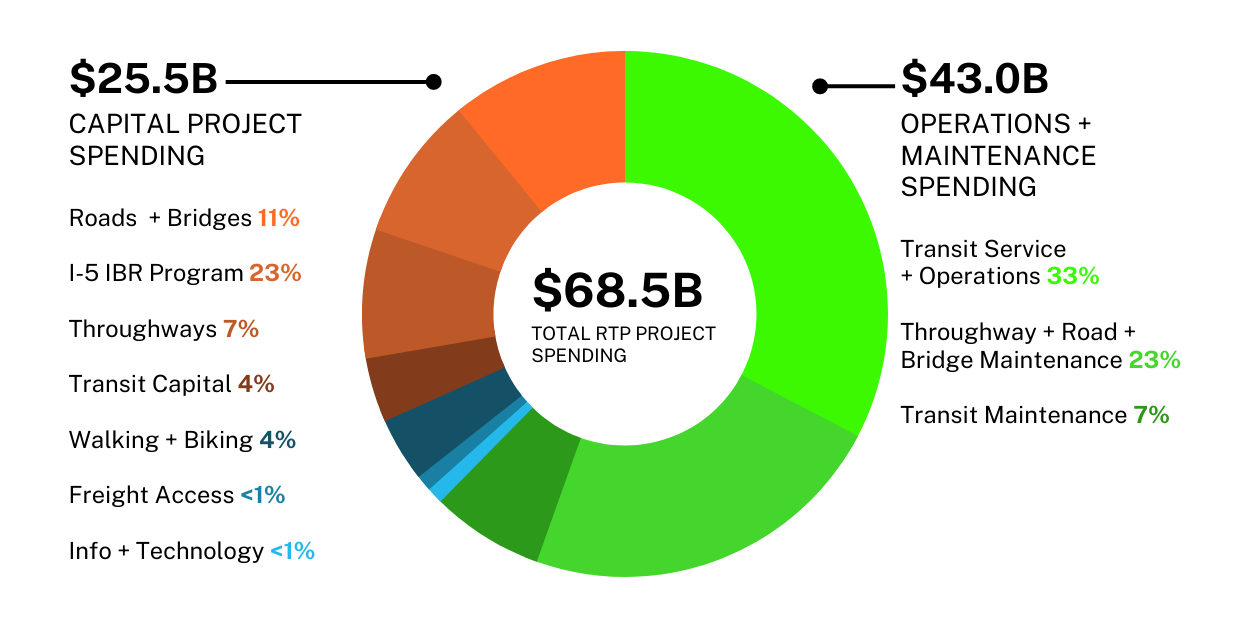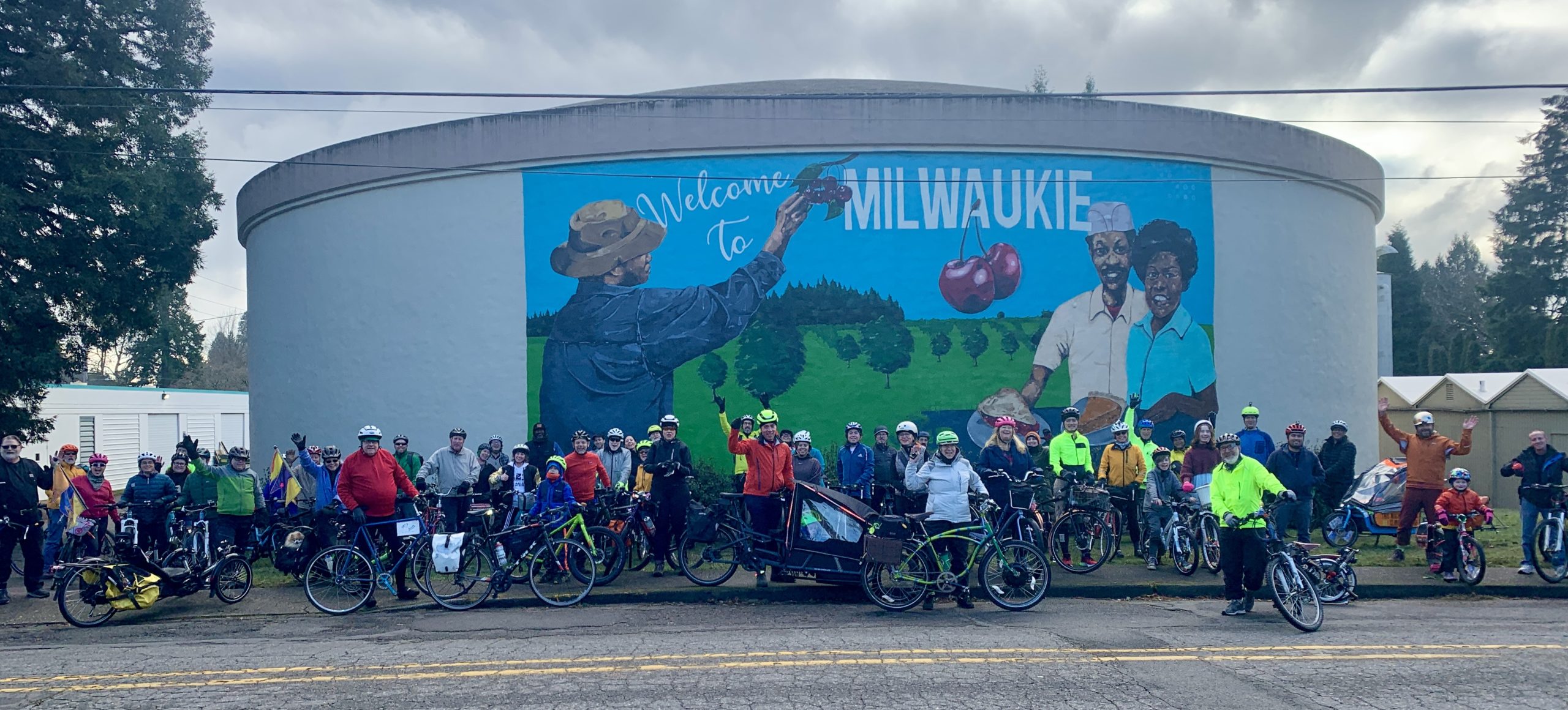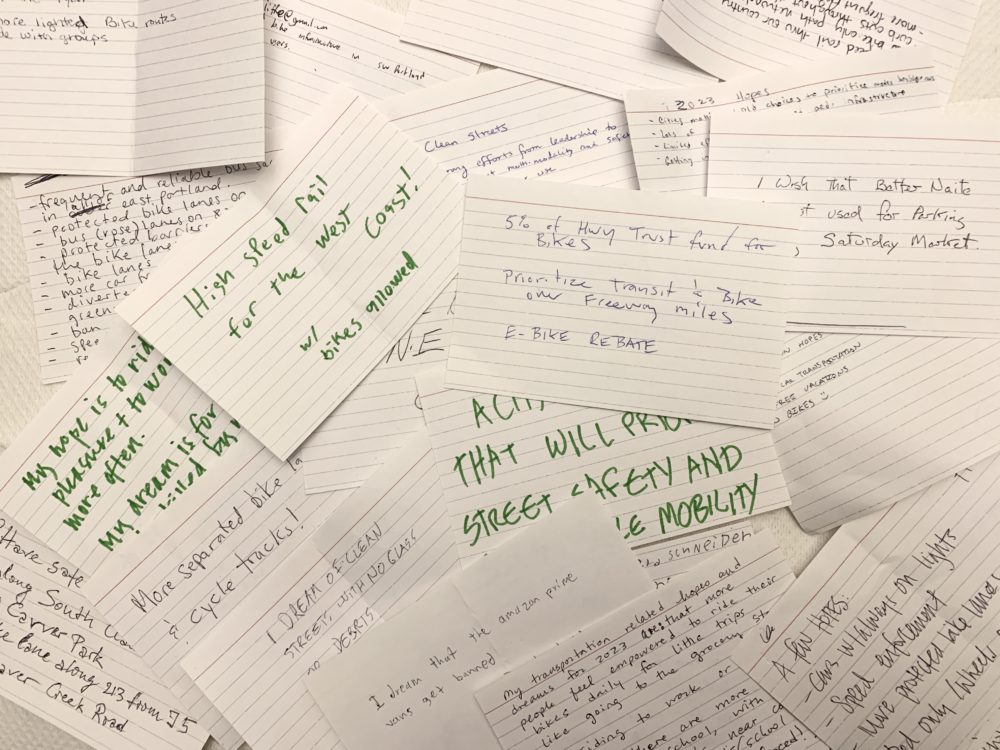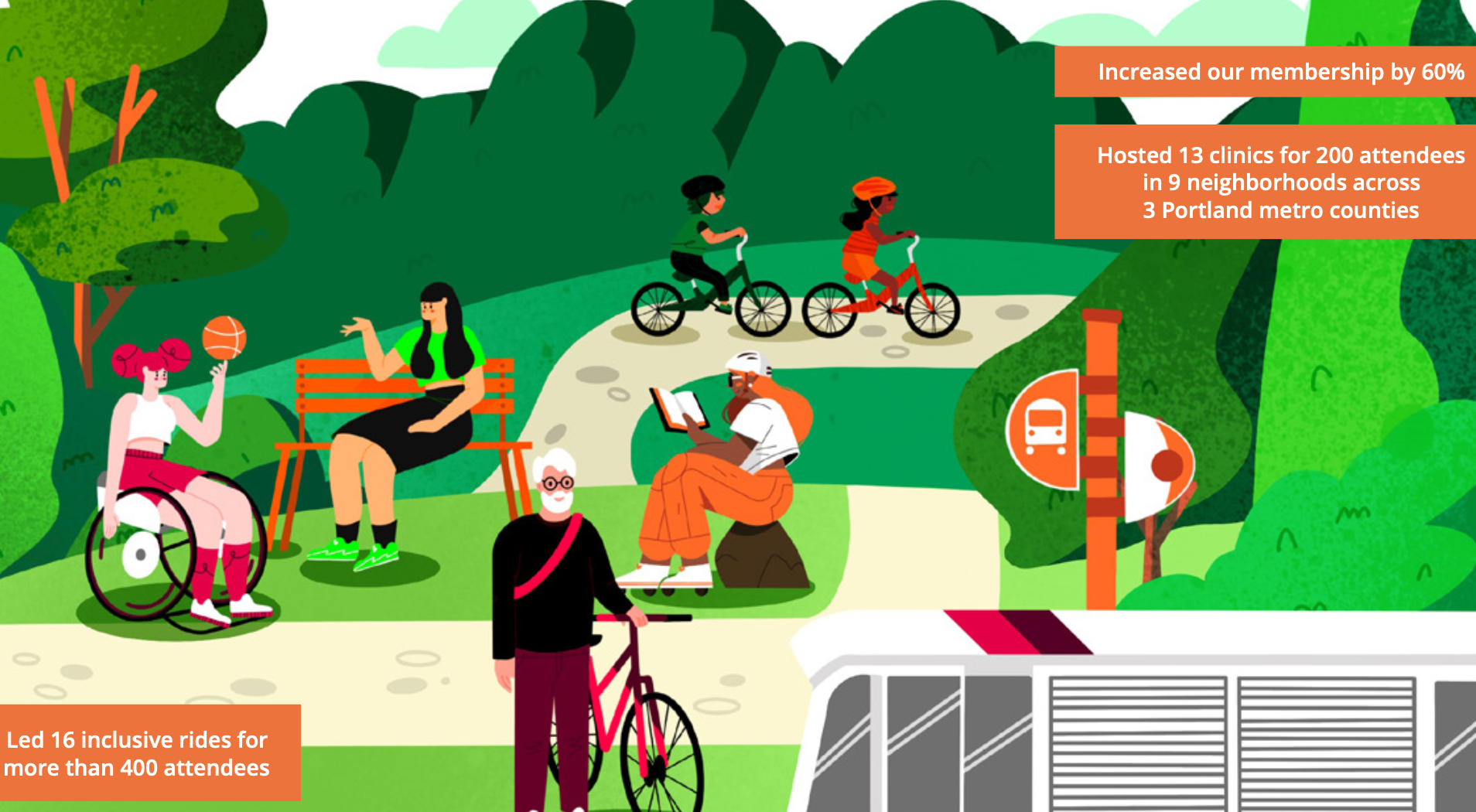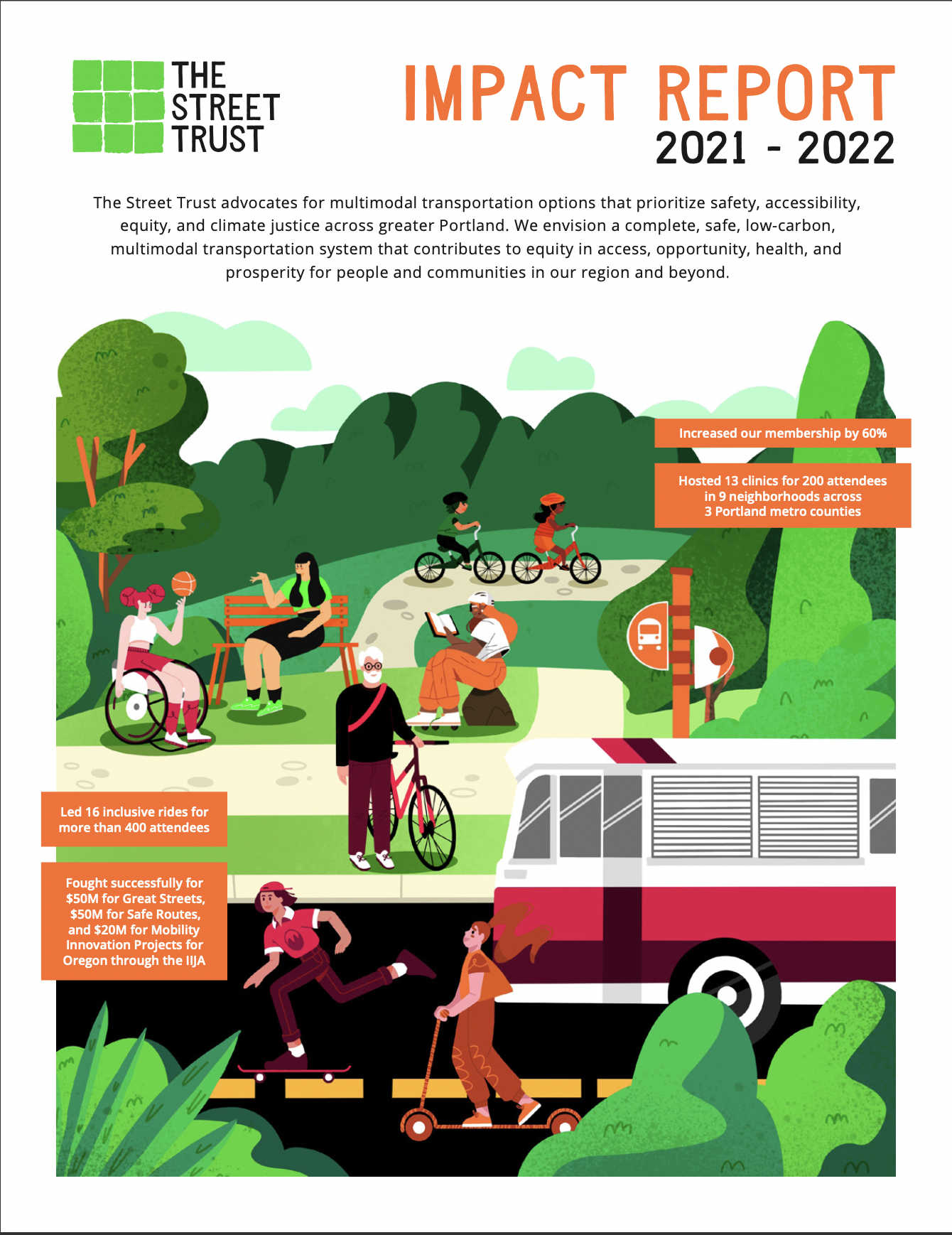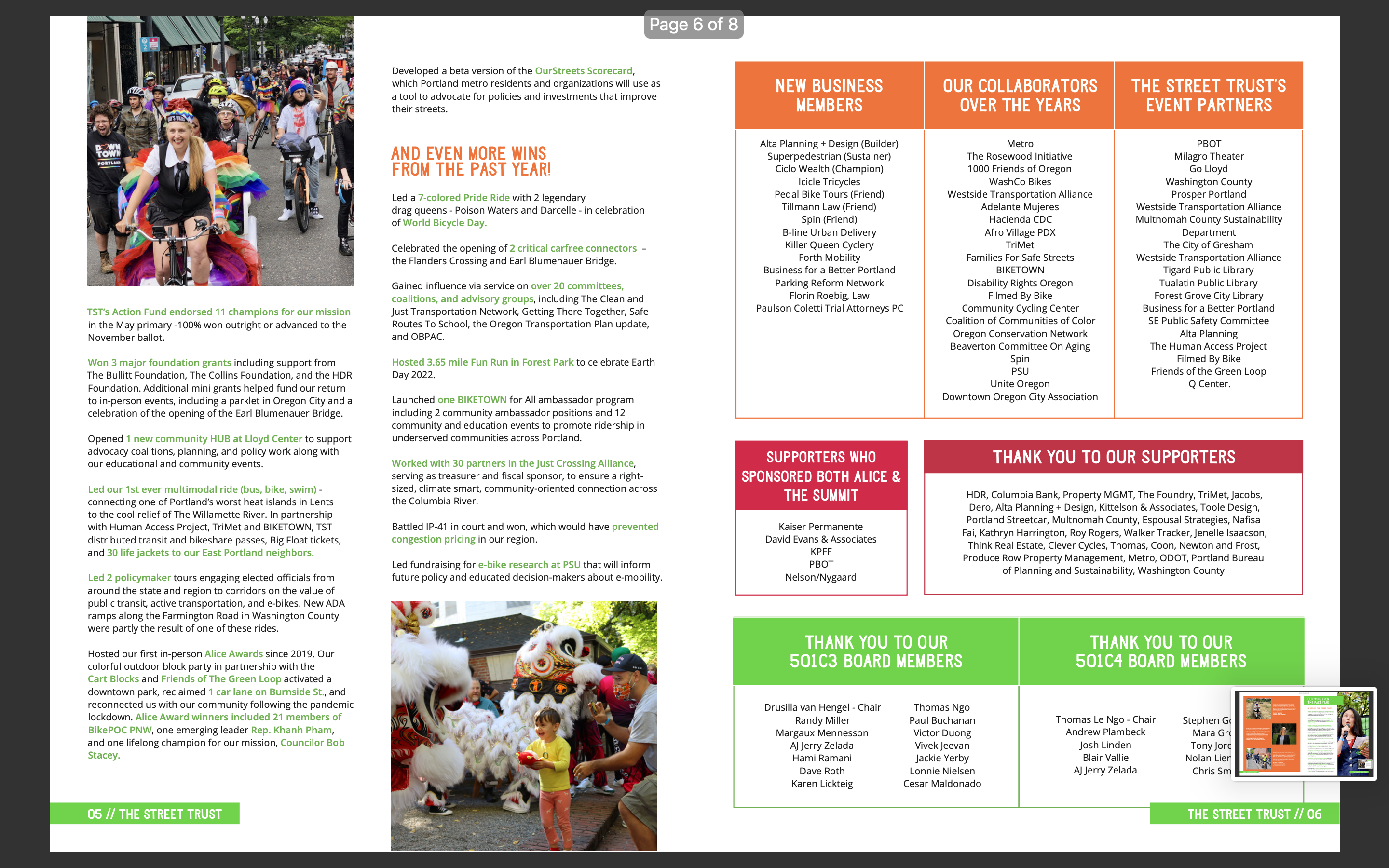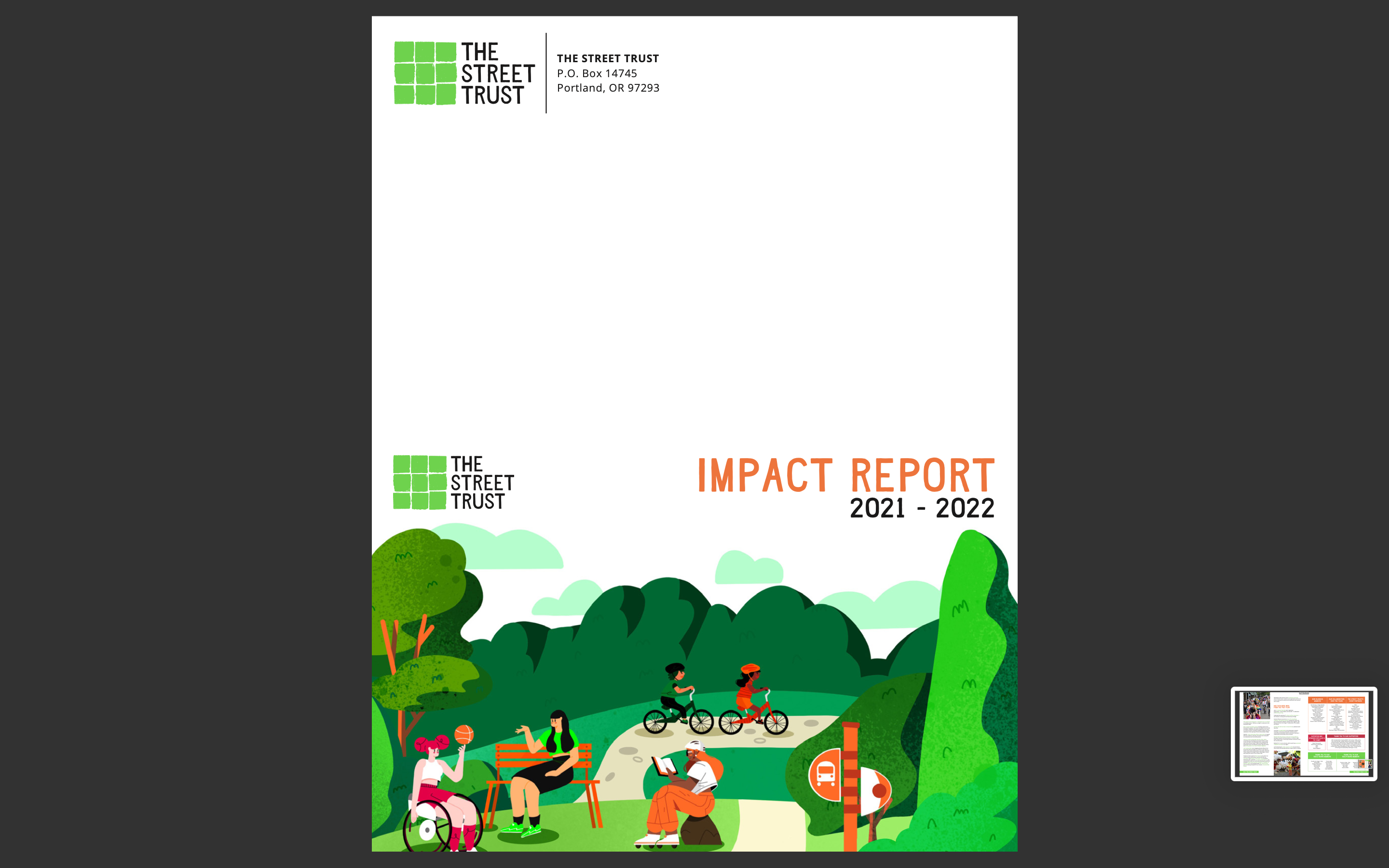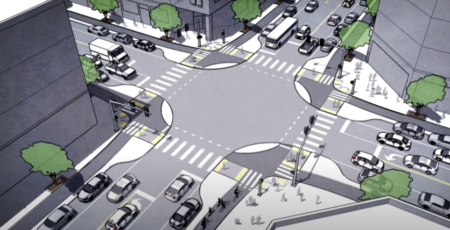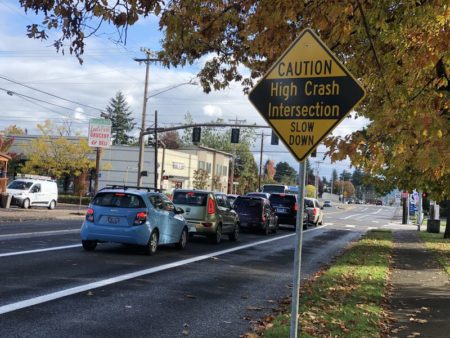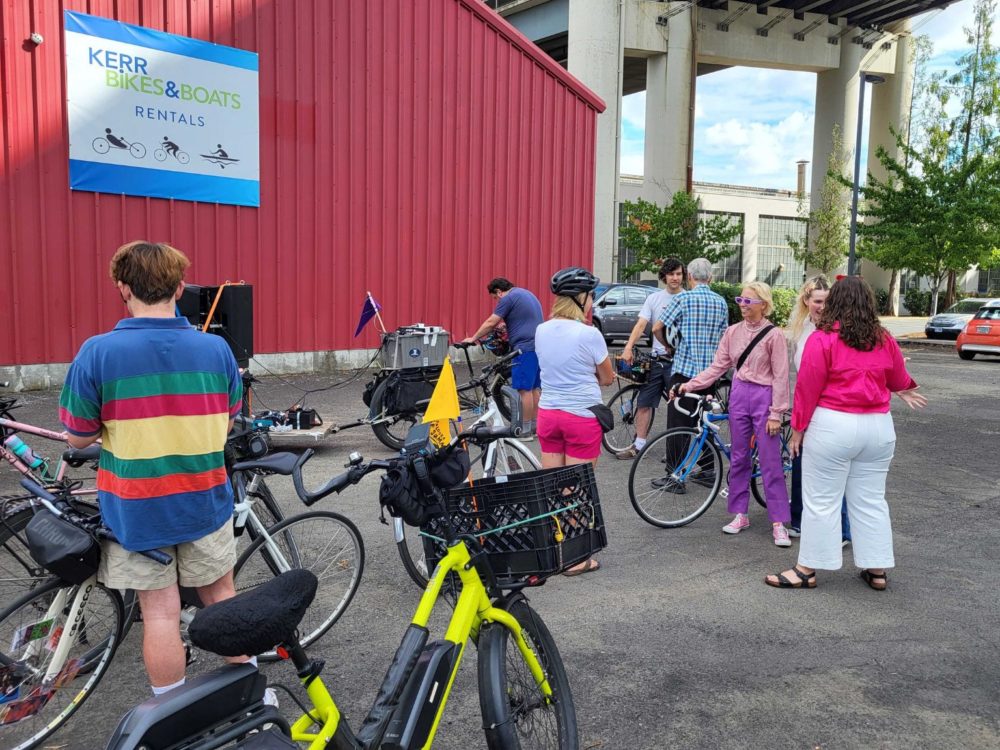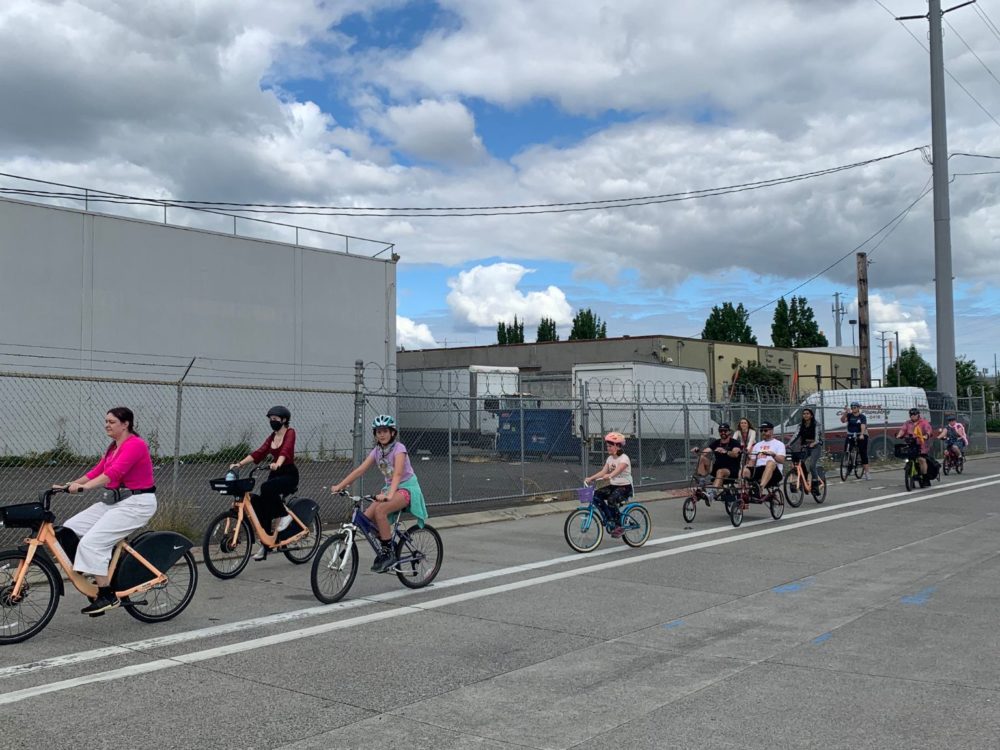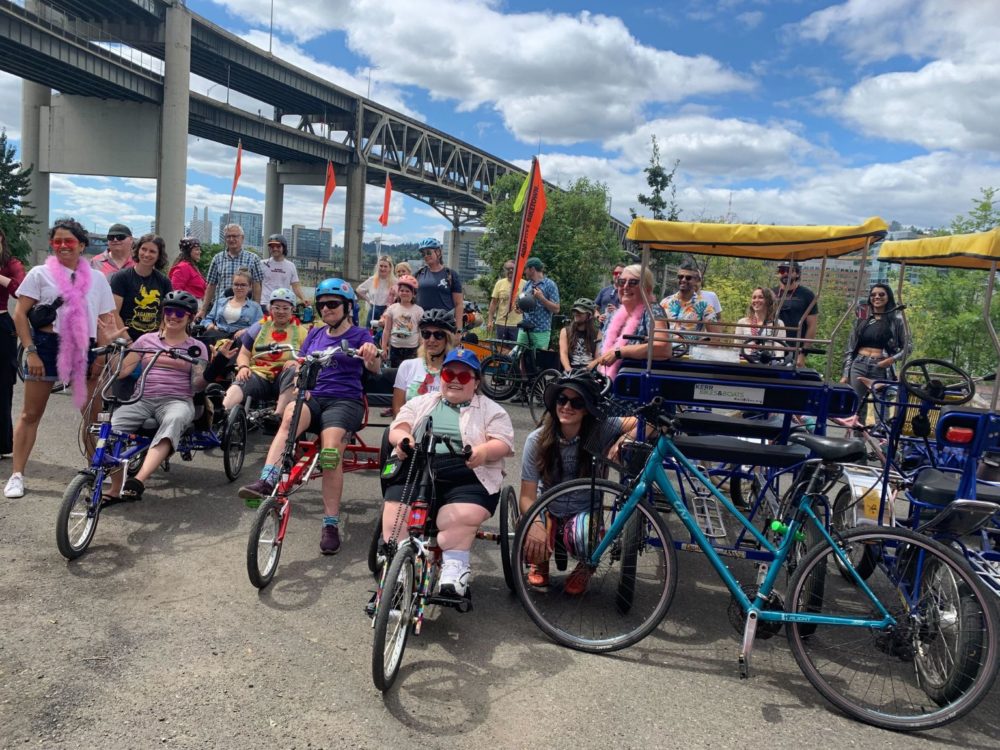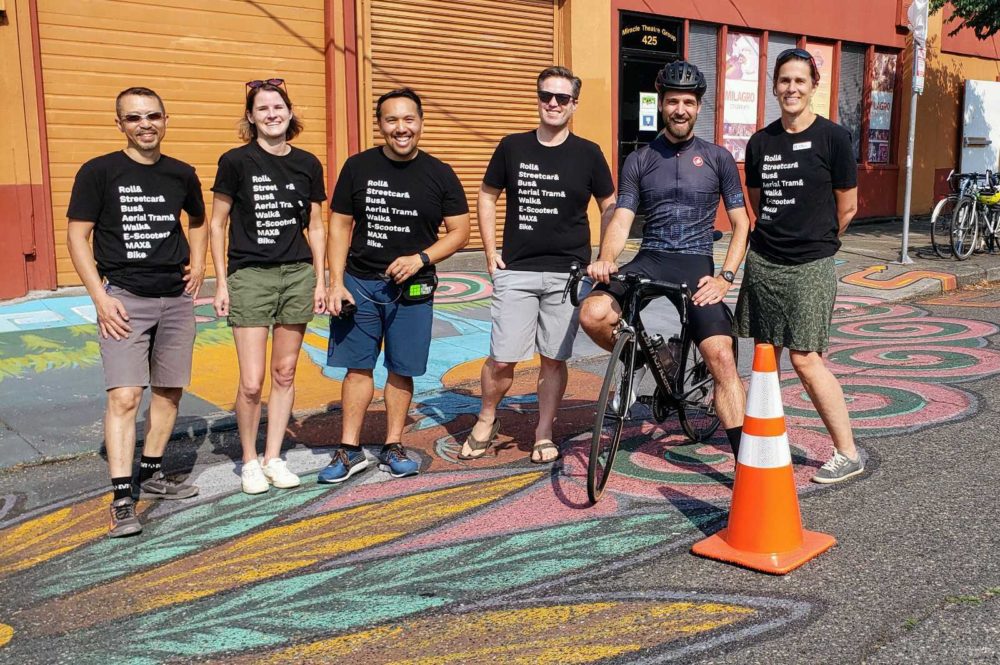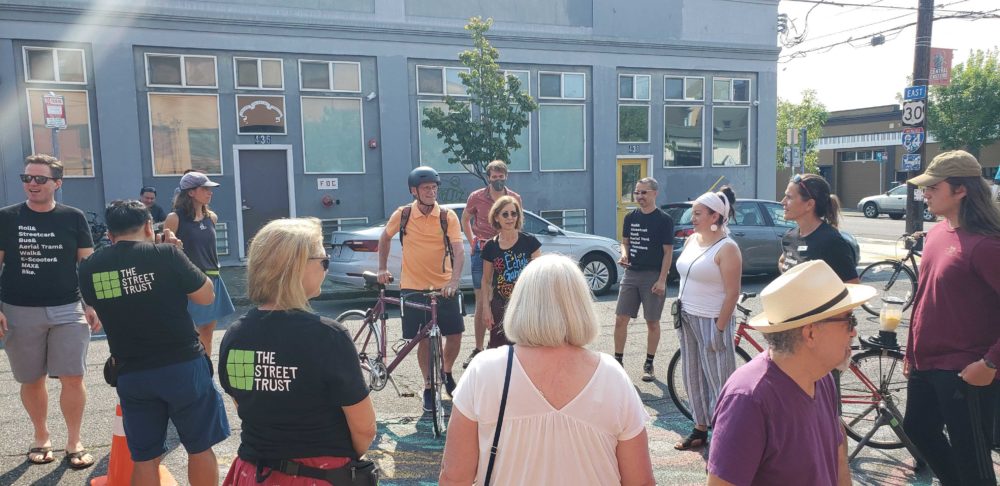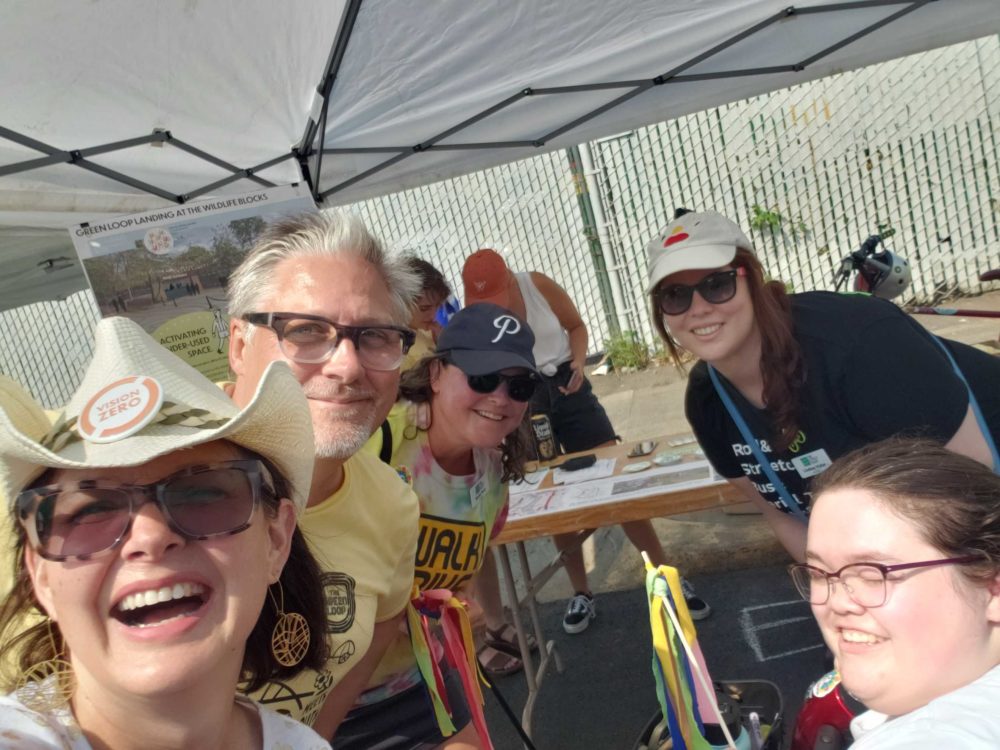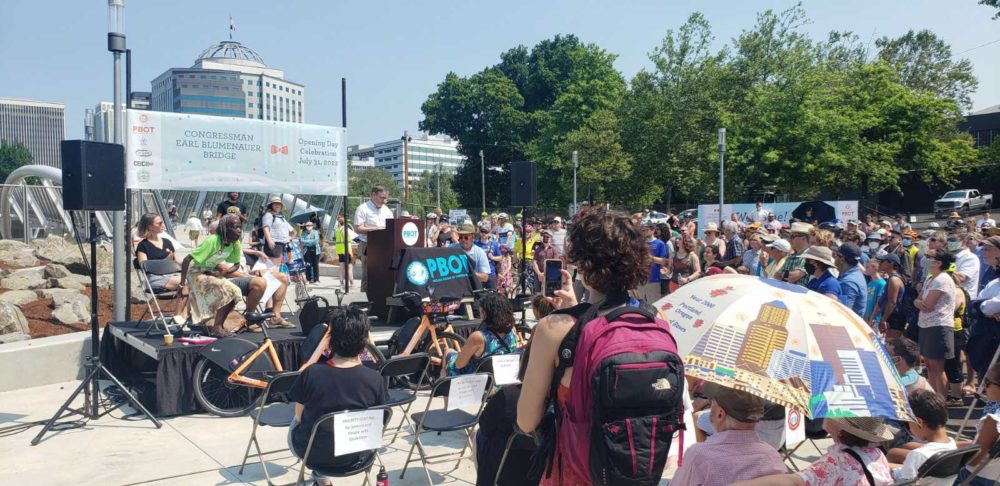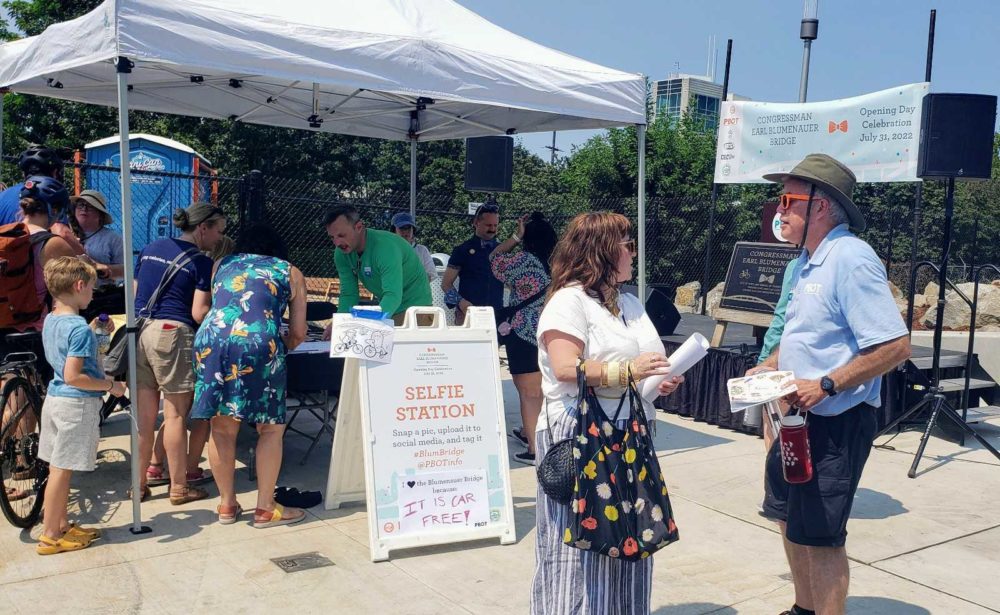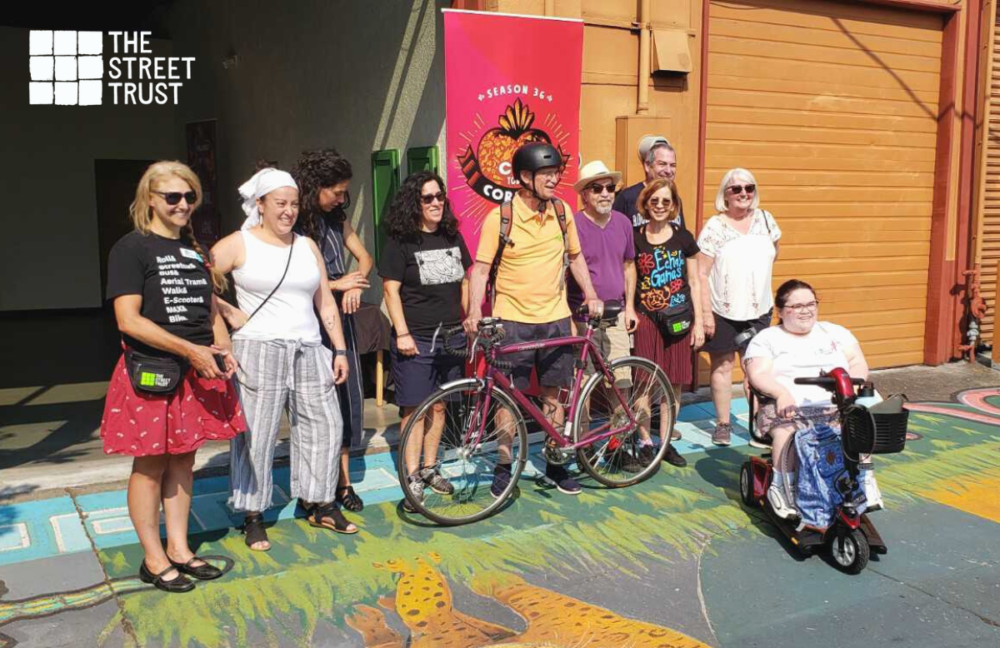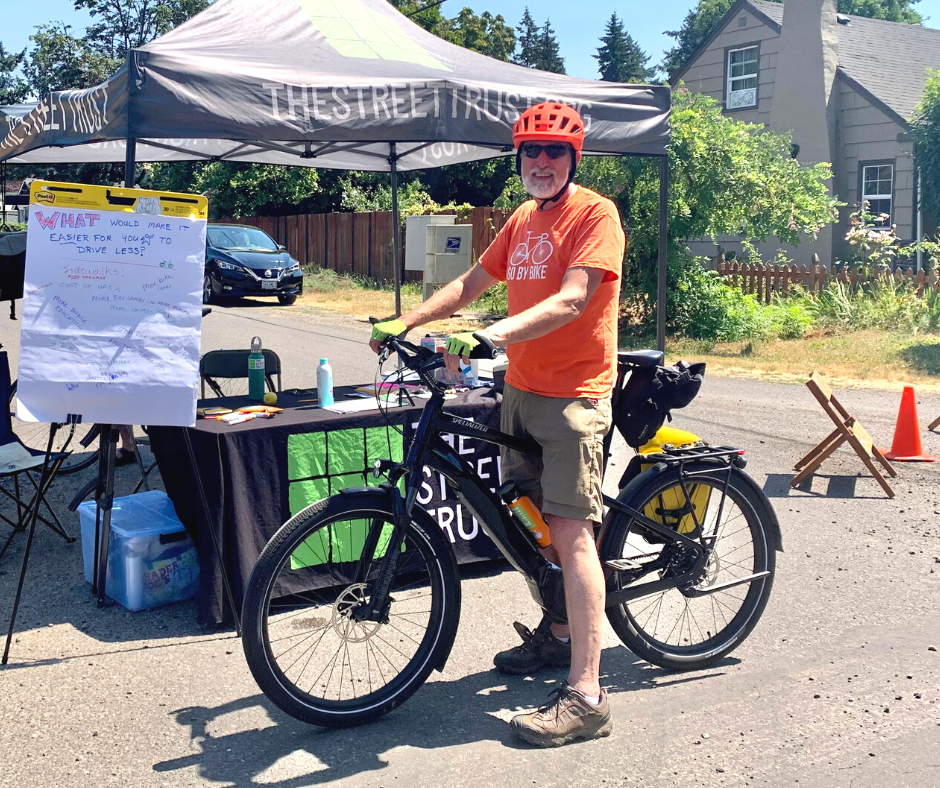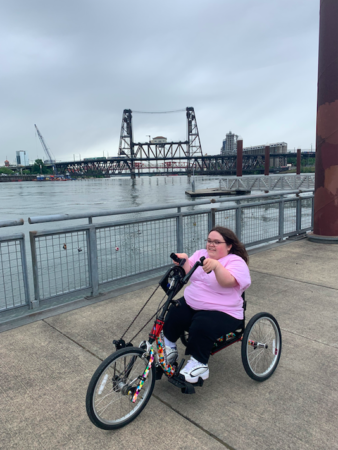
The Alice Awards honors individuals and organizations shaping Oregon’s transportation landscape, leading with a commitment to The Street Trust’s mission to create a complete, safe, low-carbon, and multimodal transportation system for enhanced accessibility and equity.
The Street Trust is proud to announce the following 2023 award recipients:
The 2023 Alice Award recipient is The City of Tigard. This award acknowledges their outstanding work in building a multimodal transportation system that promotes a healthy and prosperous community. Their contributions include implementing an innovative e-bike sharing program, reducing speed limits, creating safe routes to school, and advocating for improvements on “orphan highways,” notably Hall Boulevard. The City of Tigard’s dedication to safety, accessibility, and sustainability sets an inspiring example for the region.
Walter “Darcelle XV” Cole is the 2023 recipient of the Lifetime Achievement Award. His dedication to better bicycling and safer streets in Portland spanned decades, starting with his involvement in the Bicycle Transportation Alliance in 1992. His enduring advocacy for improved bicycling infrastructure and safer streets in Portland continued steadfastly. Although Darcelle XV is no longer with us, his legacy lives on through the positive impact he had on the city and the cycling community.
Metro Councilor Juan Carlos González is the 2023 recipient of the Elizabeth Jennings Graham Award. He has shown exceptional dedication to championing transportation justice and equity, particularly through his roles on the Metro Council and Joint Policy Advisory Committee on Transportation (JPACT). His work truly embodies the spirit of the award, making a lasting impact on transportation justice in the region and creating a more equitable and accessible transportation system for all.
Shawne Martinez is the recipient of the 2023 Safe Streets for All Award for his unwavering dedication to promoting safer streets and sustainable modes of transportation, driven by his commitment as a parent to provide a healthier lifestyle for his daughter and combat climate change. His innovative approach, including documenting his transition from a diesel pickup to eco-friendly transportation, and advocating for responsible driving, sets a remarkable example and significantly contributes to improving street safety for all.
Recipients Reflects on Their Motivations
Dave Roth, Principal Transportation Planner at City of Tigard, shared his vision for Tigard’s mobility future:

“Our community is working together to ensure that everyone can participate, prosper, and thrive, regardless of their identity, experience, age, ability, or preferred mode of travel. We’re building a vibrant, equitable, and healthy city for generations to come, with safe, sustainable, and accessible mobility options at the core of our decisions.”
Poison Waters, a close friend of Walter “Darcelle XV” Cole, reflects on the legacy of this year’s Lifetime Achievement Award recipient:
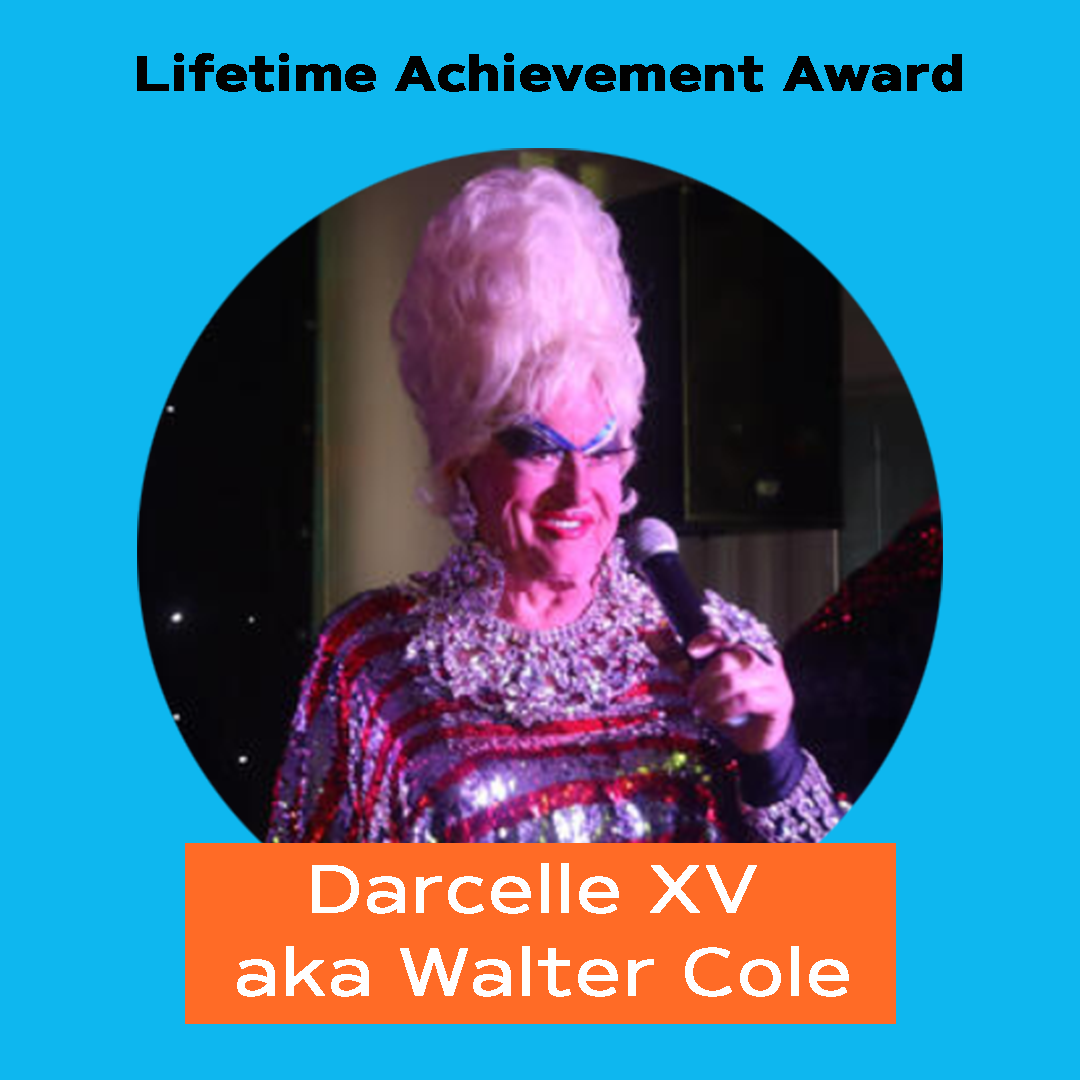
“Darcelle taught me to be a person, not just a personality. Locally, he was part of numerous nonprofits, worked with the homeless long before it became a crisis, and always supported the houseless in our community. He and Roxy spent nearly five decades building their business, raising funds for charities, caring for friends affected by HIV/AIDS, and advocating for LGBTQ rights.”
Metro Councilor Juan Carlos González shares his commitment to creating an equitable and accessible transportation system:

“As the youngest and first elected Latino Metro Councilor, my commitment is unwavering in ensuring that underrepresented communities have a seat at the decision-making table. I’ve dedicated myself to advocating for safe, equitable, and accessible transportation systems, especially in neglected areas like TV Highway. Equity, accessibility, and safety are at the forefront of my vision for our community.”
Shawne Martinez, the 2023 Safe Streets for All Award recipient, reveals the motivation behind his advocacy for safer streets and sustainable transportation:
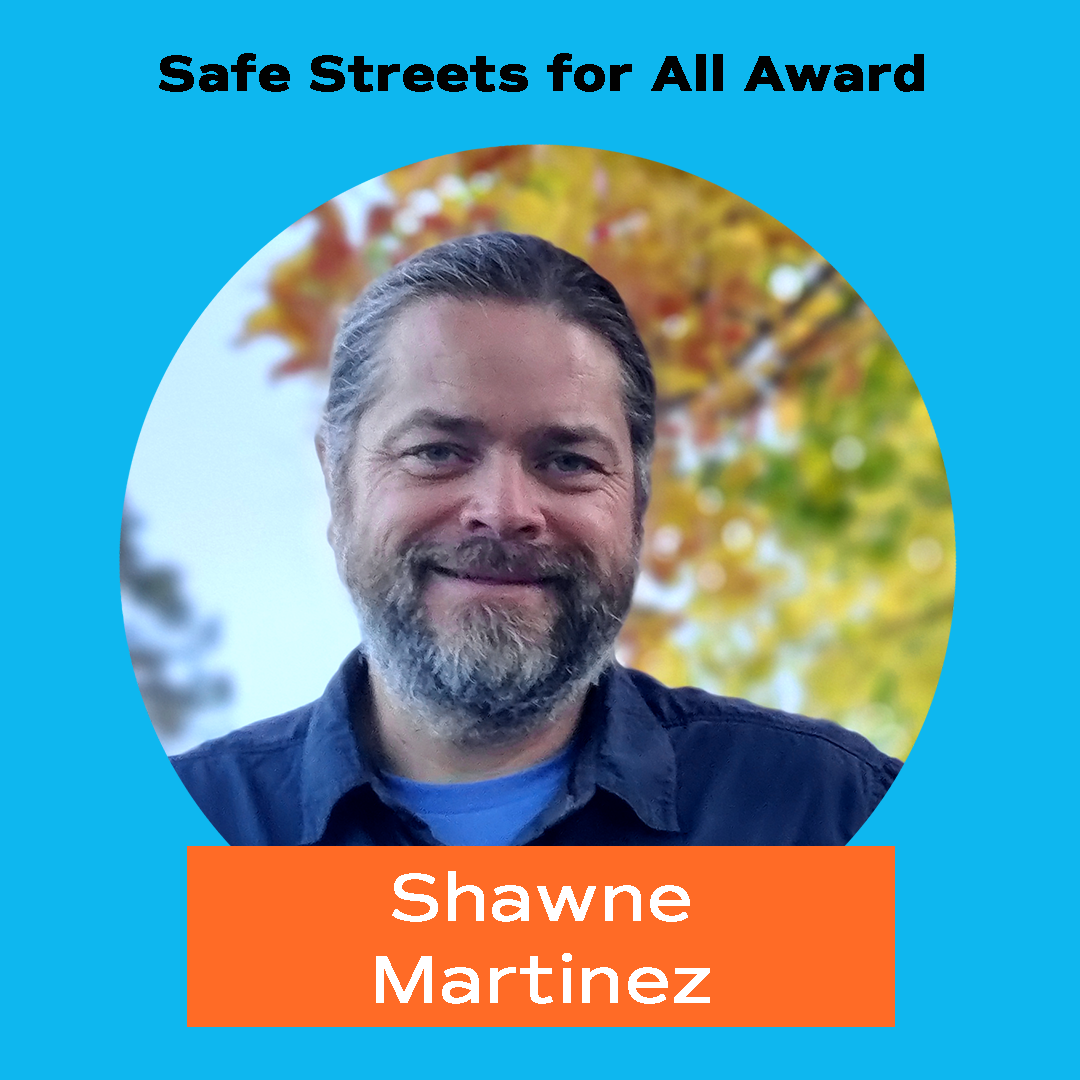
“Becoming a parent brought tremendous positive change to my life! I realized that driving a big stinky pickup truck was harmful to my daughter and everyone else around us. I made transportation choices to promote a healthy lifestyle. I want to be able to tell my daughter that I did everything I could to end car dependency and fight climate change.”
In addition to our winners, we’d like to recognize the following finalists who were nominated for an award this year!




